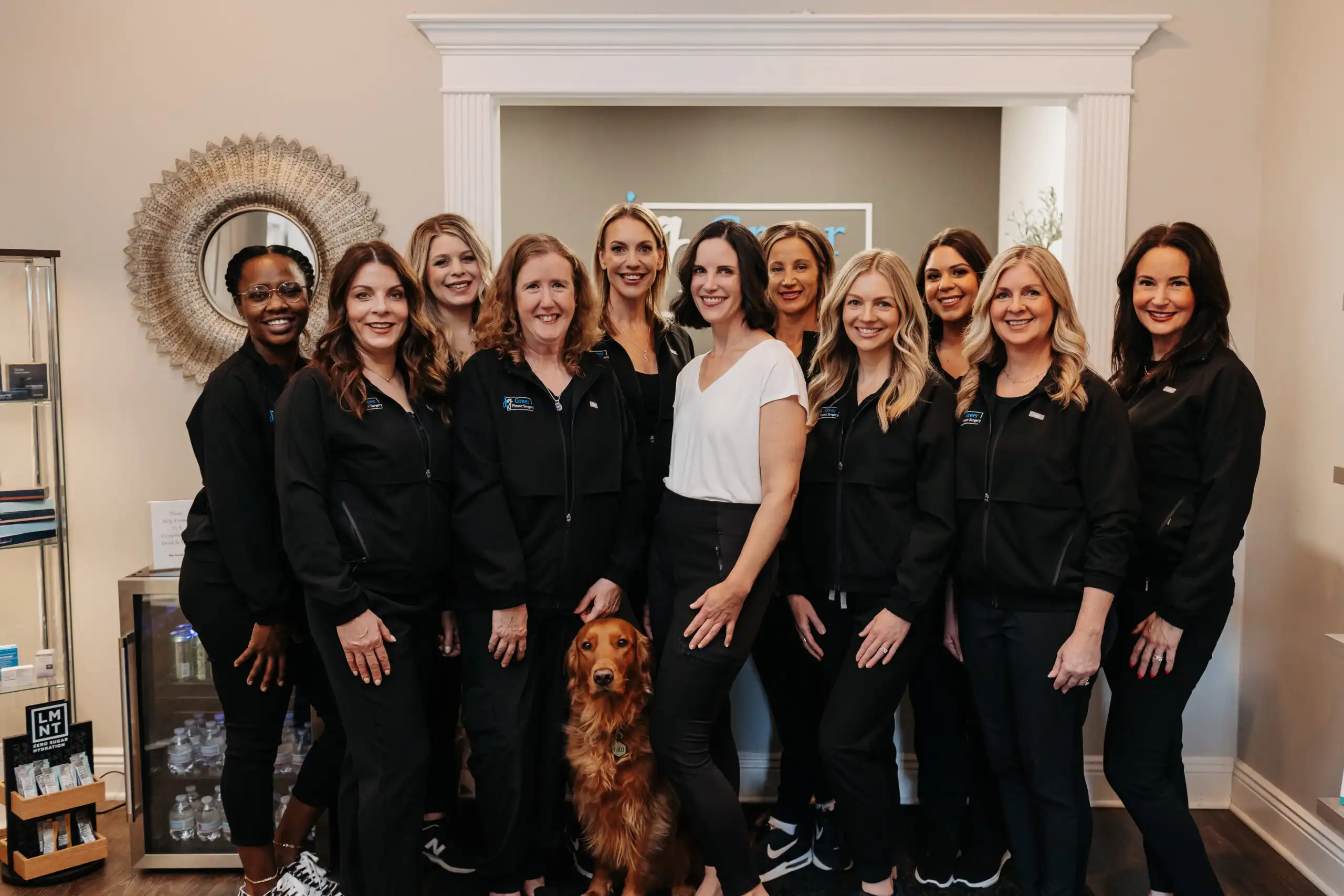
In the ever-evolving landscape of cosmetic surgery, liposuction stands as a transformative procedure that continues to captivate the attention of those seeking to sculpt and redefine their bodies. In plastic surgery, we’re always navigating the delicate intersection of art and science, which allows me to constantly witness the profound impact that liposuction can have on individuals, both physically and emotionally. This innovative technique allows us to artfully remove excess fat deposits, unveiling contours and curves that enhance a patient’s self-image and confidence. In this blog, we embark on a journey through the lens of a plastic surgeon, exploring the nuanced world of liposuction, its advancements, and the artistic finesse required to achieve natural, harmonious results.
First, a small incision (around 4mm long) is made near the target area. I make several incisions and then infuse a tumescent solution into the tissue, which includes lidocaine for numbing and epinephrine to minimize bleeding. The procedure is completed by using a blunt metal tube to suction out the fat.
There are several different types of liposuction procedures, including:
The following areas are commonly treated:
I’ve had lipo on my abdomen, hips, and inner thighs. I’d describe the pain as more of a deep soreness, like you did 500 sit-ups at the gym. Patients take an anti-inflammatory (celebrex) after surgery and will also have an opioid pain medication to take the first couple days if needed.
You will be able to go home the same day. Your incisions will be covered with a waterproof dressing, which may have some drainage, but I use a more concentrated tumescent solution to minimize it as much as possible. You can shower two days after surgery, but you should plan to take a few days up to a week off from work. You’ll wear a compression garment for four weeks following your procedure, and you’ll need to avoid exercises like running, spinning, and lifting more than 20lbs for a month afterward. You can sleep in whatever way is comfortable to you, though if you choose to lay on any of the treated areas, you may experience some mild bruising, swelling, and numbness.
Swelling will start to go down around one month after surgery, and by three months most of the swelling will be gone. You’ll see your final results after around six months.
Liposuction typically starts at around $5,000 and increases depending on the amount of treatment areas and the time involved. Each case is unique to the patient.
If you maintain the same weight after your surgery, your results will be permanent. Fat cells are like little storage tanks — they fill up when you gain weight, and empty out when you lose weight. However, liposuction actually removes the fat cells themselves, meaning there are fewer little storage tanks in that area to collect fat. This changes your body proportions, meaning if you gain weight, you’ll gain proportionally less in the areas you had liposuction.
There are two types of abdominal fat. Subcutaneous fat is the fat between the skin and the muscle. Visceral fat is inside the abdominal cavity and is tucked in and around your intestines and internal organs. If you can pinch the fat, it’s subcutaneous. If you have a hard beer belly, that’s visceral fat. Liposuction can only treat subcutaneous fat, not visceral fat. If you have lipo over your abdomen and gain visceral fat, that will make your stomach larger, and will not be treatable with liposuction.
Lipo only removes around three to eight pounds of fat. With normal fluctuations in weight, you may not see a difference on the scale; but remember, the goal of liposuction is to change body proportions, not to decrease body weight.
I’ve performed hundreds of cases of liposuction on awake patients. But unless it’s only a very small area, I recommend having general anesthesia so we can be more aggressive with the amount of fat removed, and so the operation doesn’t take as long.
Yes! I do liposuction of the hips and waist on most patients at the time of tummy tuck. When needed, I’ll perform liposuction over the abdomen as well. Removing only the deeper layer of fat (below the Scarpa’s fascia) maintains a healthy blood supply to the overlaying skin, so it does not increase the risk of healing problems.
Patients who are not candidates are typically those on blood thinners who cannot cease use for surgery, those with uncontrolled high blood pressure, and those with uncontrolled diabetes. You do not need to quit smoking to have liposuction. After all, I’m here to consult with you to ensure your candidacy!

Greer Premier Members can enjoy benefits, including discounts on treatments such as signature facials, spa services, skincare, microneedling, and laser treatments. As part of the Greer Plastic Surgery family, your entire monthly membership fee is applied to your account to be used toward future services.